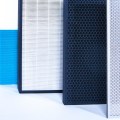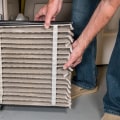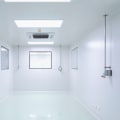There is a lot of misinformation about “whole house air purifiers”, with some air purifiers being marketed as such, but in reality they are just large portable units. While they can filter relatively more air, larger portable filters don't actually clean all the air in the house. The HVAC system incorporates a true whole-house air purifier. It can be as simple as a filter through which the air is returned to the oven (whose main purpose is to protect the components of the oven from dirt, instead of purifying the air), or it can be an electronic system integrated into the duct network.
To be considered a whole-house air purifier, the filter must be placed in the airflow of the HVAC system's ducts. If your home doesn't have central air conditioning or heating, portable air filters are the most practical option. There are separate units for the whole house, but they usually require installation in the attic and the conduction of ducts to the individual rooms. A purifier can adequately clean 12,000 ft3 per hour.
But to clean a 1,000-square-foot house, we need to clean 32,000 ft3 of air per hour. That means we'll need more than one air purifier, unless you buy one of the powerful Blueair air purifiers. Like many HEPA duct filters, the Perfect 16 can cause a pressure drop in the system and cause problems in the air conditioning system. In addition, you may need a more powerful or additional fan to maintain airflow through the system.
However, if you want to improve indoor air quality throughout your home, an air filter or a whole-house purification system can clean the air that goes through your home's heating, ventilation, and air conditioning system. Electrostatic precipitation involves applying voltage to particles that pass through the purifier, giving them a charge. Keep in mind that these numbers are calculated based on an 8-foot-high ceiling and an air purifier airflow of 200 CFM. Unfortunately, this also means that if you have an air conditioning system that doesn't use forced air, such as a boiler or electric baseboard, purifying the air in your entire house isn't really an option for you.
Smart Air is a social enterprise certified by B-Corp that offers simple and practical air purifiers and offers free training to protect people from the harm of air pollution. When selecting a whole-house unit, it is important to understand how it works to ensure its effectiveness. If volatile organic compounds from tobacco smoke or wood fire, gas-emitting materials, paints, or other sources are a problem, or if you want to eliminate odors most efficiently, a whole-home air purifier that includes a carbon filtering stage is best for you. We manufacture sensible, empirically backed purifiers and masks that use the same HEPA filters and even capture the same nanoparticles for a fraction of the cost of large companies.
The most efficient way to filter domestic air is through your home's forced air heating system or central air conditioning. These systems are passive; as long as the fan is running, they will constantly filter all the air in the house. In other words, UV light causes airborne bacteria and viruses to disappear, which is why hospitals use UV air filters in tuberculosis rooms.



